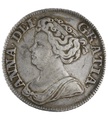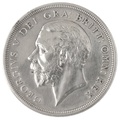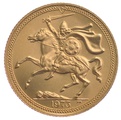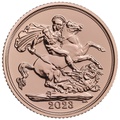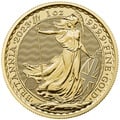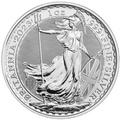British coin mints

Coins have been made in the British Isles for over 2,000 years. The Celtic tribes of Britain were known to have produced coins as trading tokens in the earliest centuries AD, but coin production and the minting process was truly established during the Roman occupation of the British Isles, with mints created across England, Wales, and Scotland.
The Royal Mint officially lists its founding date as 886 – the year that Alfred the Great became King. Under King Alfred, the crown was responsible for all issued currency coins, with multiple mints serving the realm to produce these tokens for the population.
Control became centralised around the Tower of London in 1279, with satellite mints still existing but now reporting to the Tower’s executives. As different events occurred, such as the English Civil War, other mints were established to fulfil the coin needs of each aspirant to the throne.
In the present day, the Royal Mint Ltd is owned in its entirety by Her Majesty’s Treasury and has an exclusive contract as the sole licensed producer of British coinage; both bullion and circulation coins.
There are also a number of privately owned British coin mints producing a wide range of commemorative items. It should be noted however that without the authorisation of the government, the products of these supplementary mints would officially be considered commemorative tokens only. Only The Royal Mint can truly claim to be the official British coin mint.
Timeline of British coin mints:
- 287 – The London Mint opened.
- 337 – The London Mint closed.
- 650 – The London Mint reopened.
- 690 – The Rochester Mint opened.
- 871 – The Oxford Mint opened.
- 1016 – The Bristol Mint opened around this date approximately.
- 1056 – 1059 – The Horndon Mint operated between these dates approximately.
- 1066 – The Oxford Mint closed.
- 1136 – The Carlisle Mint is captured by David the First of Scotland, becoming Scotland’s first Mint.
- 12th Century – The Edinburgh Mint opened.
- 1216 – The Rochester Mint closed.
- 1279 – The London Mint relocates to become the Tower Mint.
- 1642 – 1651 – The English Civil War. 16 mints opened across the country, in order to supply both sides of the conflict.
- 1642 – 1646 – The Oxford Mint temporarily reopened.
- 1696 – William III institutes The Great Recoinage. Isaac Newton is made a Warden of the Mint.
- 1696 – The Bristol Mint reopened as a Branch Mint as part of the Great Recoinage, along with Chester, Exeter, Norwich, and York.
- 1698 – The Bristol Mint closed, and was bought out to become a workhouse.
- 1700 – Isaac Newton is promoted to Master of the Mint (until his death in 1727).
- 1707 – The Act of Union saw all Scottish coin minting move to London.
- 1710 – The Edinburgh Mint closed on 4 th August, three years after the Act of Union.
- 1788 – Matthew Boulton opened the Soho Mint in Handsworth, Birmingham.
- 1797 – Boulton earns the right to make copper currency for the Royal Mint at his Soho Mint.
- 1799 – The Royal Mint begins to convert steam-powered coin presses from Matthew Boulton.
- 1809 – The Royal Mint moved to the East End and founded the Royal Mint Court on Little Tower Hill.
- 1817 – The Edinburgh Mint was abolished completely.
- 1830 – The Edinburgh Mint building was sold off.
- 1848 – The Soho Mint, Handsworth closed.
- 1850 – The Heaton Mint opens in Birmingham, buying up much of the old Soho Mint machinery.
- 1877 – The Edinburgh Mint building was demolished.
- 1965 – The private Pobjoy Mint is founded in Sussex, where it still operates today.
- 1968 – The Royal Mint begins to relocate from its cramped London headquarters to a larger, more isolated site in South Wales.
- 1975 – The Royal Mint completes its move of the entirety of operations to Llantrisant, South Wales.
Below is a list of all the major British coin mints; how and why they were established, whether they continued or ceased production, and their historical relevance or significance.
.
London Mint:
287 AD – 337 AD & 650 AD approx. – 1279
It will come as no surprise that the London Mint was the first major mint in England and is believed to have been the first major mint in Britain. Established by the Romans, the mint served as their British base for coin production – supplementing the large quantities of coins brought in from the empire.
Due to the limited need for the mint, production was very intermittent, with the mint closing for around 200 years following the Roman exodus from England in 410/411 AD. The London Mint restarted small amounts of coin production from around 650 AD, but it wasn’t until Alfred the Great became King that the London Mint really began to output regular currency.
In the 870s AD the London Mint began to make silver pennies bearing Alfred’s likeness, with some also stating LONDONIA. Help was granted to the mint from Rochester, whose continued production meant they had the coin minting expertise, as well as equipment and materials, needed to make regular coins. Some experts believe the town was rewarded for its help with permission to produce coins alongside London.
As London established itself, other mints popped up alongside Rochester. Within a few years there were 30 mints across Britain, and by the time of Ethelred II (978 – 1016) there were 70 mints. Though the number of mints seems exceptional by today’s standards it should be remembered that these would have been small facilities similar to blacksmiths, rather than the large financial institutes of modern mints. These didn’t last long in the grand scheme of British history, as the Norman Conquest in the 13th Century whittled the list back down to London and Canterbury, with a few exceptions.
The London Mint’s location isn’t definitively known, but it’s believed to have been in a place called Old Change (now Old Change Court) near Cheapside, a road that ran along the Goldsmith’s Quarter.
.
Rochester Mint:
690 – 750 AD approx. & 930 AD – 1216
Little information is available about the Rochester Mint. It is one of several small mints which existed in the first millennium, significantly increasing its workload in 930 AD some years after King Alfred took to the throne.
The Portable Antiquities Scheme lists coins found from the time of William I (The Conqueror), as well as William II, Henry I, and King John of England.
The exact date of the Rochester Mint’s closure is unknown.
.
Oxford Mint:
871 – 1066 & 1642 – 1646
The Oxford Mint is the next known oldest mint in Britain. As mentioned above, the Rochester Mint was an aide to the London Mint, but Oxford was one of the other five that established itself during the reign of King Alfred, including Maldon, Hertford, and Canterbury.
Silver coins were made at the site during the reigns of Alfred and Ethelred, and it wasn’t until King Charles I took up residence in the 17th Century during the English Civil War that another coin was made. During this four-year period there was an Oxford Crown, bearing Charles’ portrait, riding a horse, and set in front of the city of Oxford.
The mint was located at New Inn Hall, which has since been replaced with St Peter’s College.
.
Bristol Mint:
1016 – 1066, 1279 – 1281, 1300 – 1302, 1465 – 1472, 1546 – 1549, 1643 – 1645, 1696 – 1698

Photo of Bristol's Castle Park. Image courtesy of Heather Cowper via Flickr.
The Bristol Mint was established inside Bristol Castle in the heart of the city, what is now modern-day Castle Park by the main shopping district. This information is conflicting with the dates above, however, as the first mention of Bristol castle is in 1088 – after the first period of coin minting – though historians do state that the castle predated this, just without an official year of completion.
The castle was a Norman build, initially made of wood in the motte and bailey fashion: the castle was on a hill with a walled courtyard and a ditch around that. It was later upgraded to stone.
The mint produced silver coins initially, but between 1465 and 1472 it had permission to also strike gold coins. This made Bristol quite unique, and more so given they were the only mint outside of London to have an engraver on site. When the mint reopened in 1546 it had permission for gold and silver minting once more, striking coins for King Henry VIII.
The castle was demolished in 1656, so it’s not known if the Bristol Mint continued to operate, but the Bristol Mint was operational as a Branch Mint during the Great Recoinage of 1696 under King William III. At this point the Bristol Mint was operating from part of a merchant house, previously used as a sugar refinery and nicknamed The Sugar House. This new mint location was a mere five minutes away from the remnants of the castle, between St Peter’s Church and the River Avon. The Bristol Mint was open for two years, assisting the Tower Mint in London, before being bought out and converted into a workhouse for the poor. That building eventually became St Peter’s Hospital and was destroyed in the Second World War during the Blitz.
.
11th Century (1056 – 1059)
The Horndon Mint in Horndon-on-the-Hill, Thurrock, Essex, was a very minor Anglo-Saxon mint known simply for one coin in the 11th Century – a Sovereign-style coin with a Martlet (small bird) and the likeness of Edward the Confessor. The coin bears the words Dudinc on Hornidune.
.
Scottish Mints:
1124 – 4th August 1710

Photo of Edinburgh Castle. Image courtesy of Allan Watt via Flickr.
Scotland has had 25 mints between 1124 – 1710. As the capital of Scotland, Edinburgh’s mint was considered one of the most important. The Royal Mint of Scotland was originally located at the Palace of Holyrood before being moved to Edinburgh Castle in 1559 due to increasing military conflicts with the English.
The mint at Carlisle, now part of Cumbria, is believed to be the first mint of Scotland after being captured in 1136 by David I.
Scottish coin production was moved to London following the Acts of Union 1707. To mark the occasion there was a 1707 Queen Anne silver crown minted bearing an E mark to indicate Edinburgh.
.
Tower Mint:
Tower of London: 1279 – 1809

Photo of the Tower of London. Image courtesy of Wikipedia and the Creative Commons license.
During the thirteenth century, production of currency in England became more centralised and united. The numerous smaller mints were phased out in favour of a single mint in London, though other mints did continue to operate outside of the capital. As a secure fortress the Tower of London was an obvious choice of location. By 1279, under the reign of Edward I, there are clear records that the mint had been moved to the Tower.
From the 1340s gold became a more frequent choice for coinage, and gold coins would continue to be minted at the tower regularly until the outbreak of the First World War.
The coinage process was consolidated further in the fifteenth and sixteenth century. Religious mints such as York and Canterbury found themselves closed down during the reign of King Henry VIII and the mint in the Tower became one of the only places to continue production.
Coins were almost always stamped with the face of the reigning monarch and tampering of any kind was considered treason. Forgery or clipping of gold coins was punishable by having a hand removed, or even castration. The Warden of the Mint was given to the man responsible for the integrity of England’s coinage, investigating and punishing any attempts to defraud the crown.
.
Civil War Mints:
1642 – 1651
Upon the outbreak of the English Civil War Parliament seized control of the Tower Mint, and King Charles I was forced to flee the capital. In order to fund the war, 16 emergency mints were established all across the British Isles: Colchester, Chester, Cork, Edinburgh, Dublin, Exeter, Salisbury, Aberystwyth (Castle), Truro, Weymouth, Worcester, York, Carlisle, Newark, Pontefract and Scarborough were all enlisted to make coin for both sides of the conflict. The money was essential in paying the soldiers of both armies, keeping them loyal.
.
1696 Coin Act:
.
Coins produced prior to 1662 were falling into a state of poor condition. Between clipping and general degradation, the weight was lower than the face value of many of the coins. The Great Recoinage involved the return of silver coins by weight rather than face value, before being reissued to the standards of the time. Satellite mints were established at Bristol, Chester, Exeter, Norwich and York to aid in the process.
Sir Isaac Newton was made Warden of the Mint in 1696, and soon showed an aptitude in both the creation of the satellite mints required to meet the demands of recoinage, and later as an investigator into the forgery and clipping of coins. He was made Master of the Mint a few years later and continued to have a positive effect on the coinage of Britain, one example being the royal decree he orchestrated, setting the value of a guinea to 21 shillings.
.
Soho Mint:
Handsworth, Birmingham: 1788 – 1848
English manufacturer Matthew Boulton began a mint in his Soho manufactory in the West Midlands in 1778. The Soho Mint was equipped with state-of-the-art machinery, driven by his own Boulton & Watt steam engine design. The mint produced copper and silver coins, as well as tokens, for both domestic and colonial purposes. He later provided the Royal Mint with new machinery following its move to Tower Hill. When the Soho Mint shut down the machinery was sold to the new Birmingham Mint of Ralph Heaton.
.
Royal Mint Court:
Little Tower Hill, East End, London: 1809 – 1967

The Royal Mint, Tower Hill 1830. Image courtesy of Wikipedia in the public domain.
With Britain’s global influence expanding, coin demand was growing and the facilities at the Tower had become outdated. The decision to use new machinery meant bigger premises were needed. The Tower had no more space for the mint and was being used for military purposes during war with the French. Work was started in 1805 but it wasn’t until 1812 that the Tower Mint was officially closed, with the keys being ceremoniously returned to the Tower.
The new site for the Royal Mint was initially a big improvement over the Tower. The modern machinery, houses for staff and a boundary wall all culminated in a building which achieved a ‘modest grandeur’.
As the war with France went on, and the Government determined that coinage should be handled solely by the Mint, Tower Hill soon found itself at full-time production.
By 1856 however the Mint was proving to be inefficient, with irregularities and variances in the weight and fineness of coins produced. George Frederick Ansell was employed to improve the mint’s efficiency and soon ordered more accurate weighing equipment, while also reducing the losses incurred during the minting process.
As the industrial revolution propelled Britain to new heights, and more colonies were established around the world, even the new Tower Hill facility was unable to meet the huge demand for British coin across the globe. Six official satellite mints were established in order to supply the Empire with all the coin it needed; these were at Sydney, Melbourne, Perth, Ottawa, Mumbai and Pretoria. Other independent mints were still opened, though none enjoyed the royal assent of the others.
.
Birmingham Mint:
Formerly Heaton's Mint. Jewellery Quarter, Birmingham: 1850 – 2003

Photo of Birmingham Mint on Icknield Street. Image courtesy of Elliot Brown via Flickr.
The Birmingham Mint - originally known as Heaton’s Mint - was a private company located on Icknield Street in Birmingham’s Jewellery Quarter. It began following the collapse of the Soho Mint in nearby Handsworth, from which they bought much of the minting machinery at auction.
Ralph Heaton & Sons (as the company was officially titled) occasionally worked with the Royal Mint. They began producing tokens and coins in 1850. Overseas orders were a large part of their business; producing coins for countries including Australia, France and India, alongside small contracts for the Royal Mint when demand could not be met.
When the Royal Mint’s new site opened in Wales, the Birmingham Mint saw a reduction in orders for the UK, but business from other countries saw production reach its peak in 1979, with a record output of 13 million coins per week being produced.
The introduction of the euro in the European Union saw the plant do well, but a later slump in trade and reduced contracts from the Royal Mint and the company was sold in 2003.
.
Pobjoy Mint:
Sussex, England: 1965 – Present
The Pobjoy Mint is a privately-owned company based in Surrey, along with an American office in Minnesota. Established in 1965 by the Pobjoy family, they produce commemorative coins, medals, tokens and bullion. They also produce legal tender coins for several British Overseas Territories.
In 1978 they produced Verenium, a man-made precious metal that has been used in high denomination coinage ever since. Their work has won several awards for both quality and design.
.
Royal Mint Llantrisant:
Wales: 1968 – Present
The outbreak of the First World War, and the years that followed, saw the duties of the mint change. Gold ceased to be part of circulated currency and instead the mint produced medals for the military. Orders from foreign countries were no longer just accepted but actively sought out, as the mint brought work in to continue operations.
The economic downturn and Second World War continued this trend up to the 1960s, when it was announced the Pound would be decimalised. The need to re-mint the currency of Britain, while still maintaining a high standard of work for other countries, meant that a new site was needed. The once impressive Tower Hill had become an overcrowded and outdated building and it was agreed a new site would be built in Llantrisant, Wales.
Following the decision to decimalise the Pound, work on the new mint in Llantrisant started in 1967, with the opening of the first phase taking place in 1968. Production transitioned from the site at Tower Hill to the new mint over the course of seven years, with the final coin - a Gold Sovereign - struck in London in 1975.
During this transition the Coinage Act of 1971 was passed in order to try and consolidate the numerous coin-related laws that had been enacted over the years. The Coinage Act abolished historical roles like the Master of the Mint and gave control to the Chancellor of the Exchequer.
The Royal Mint was established as a trading fund in 1975 due to economic recession in the 70s. With the freedom to control its finances, the mint began to export more heavily and enjoyed a turnaround in profits.
In recent years it has diversified the products it offers, helping it to remain profitable. It produces numerous commemorative coins as well as bullion bars, and visitors can enjoy a guided tour of the mint in Llantrisant as part of ‘The Royal Mint Experience.’
- How To Buy Gold
- How to Buy?
- Payment Options
- Delivery Options
- Gold Storage
- Storage at Brink's
- Gold Investment Guide
- Why buy gold?
- Is gold a good investment?
- Why physical gold?
- Best time to buy gold?
- Gold bars vs coins?
- Gold vs Silver
- Gold - Silver Ratio explained
- VAT on bullion
- CGT on bullion
- Legal tender coins
- Top 5 Gold Investments
- Top 5 Silver Investments
- Gold vs ISAs
- Gold vs Buy-to-Let
- Gold vs FTSE 100
- Gold vs Bitcoin
- Where to buy gold?
- Why buy from us?
- Where to sell gold?
- Coin Shops
- Gold Price Forecasts
- Top 10 Gold Producers
- Top 10 Gold Reserves
- Gold Britannia vs Sovereign
- Britannia coin designs
- Sovereign coin designs
- Sovereign Mintages
- Sovereign mint marks
- British coin specs
- What is a proof coin?
- Royal Mint bullion
- The Queen's Beasts
- Royal Mint Lunar Coins
- Bullion Refiners
- British coin mints
- Krugerrands
- Gold Tola - India & Pakistan
- Bullion Index


